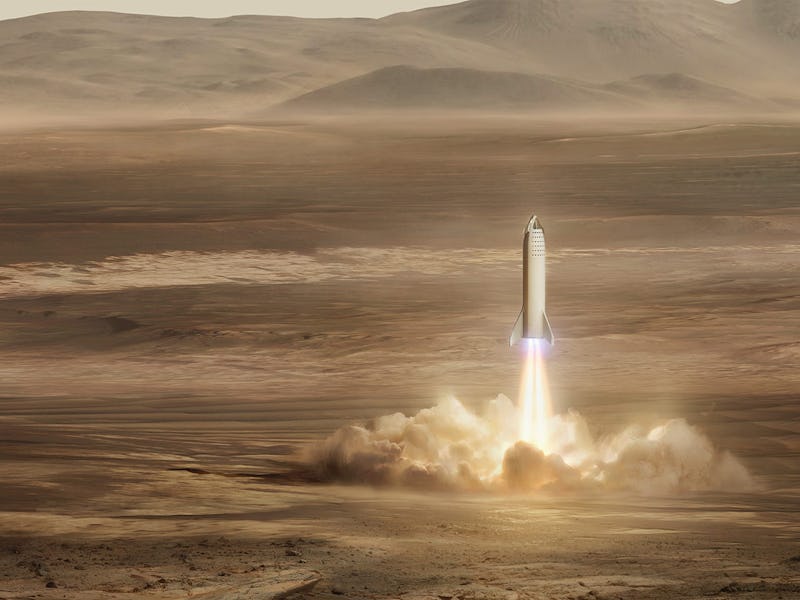The Starship, SpaceX’s human-carrying rocket, may be close to finding a landing spot on Mars.
The stainless steel behemoth, currently undergoing a test process at the company’s Texas facilities, is designed to send astronauts to Mars and establish a base. The astronauts’ initial goal would be to set up a propellant depot, which could harvest resources on Mars and create liquid oxygen and methane. This would be used to refuel the Starship and power its Raptor engines, which don’t need rocket propellant unlike those used on SpaceX’s current Falcon 9 rocket.
Once that’s set up, the astronauts could either return home or move out further, establishing a planet-hopping network with refueling stations along the way. This is a dream of founder Elon Musk, who has described his vision of humanity as a multi-planetary species. Musk has described the potential for a million-strong city on Mars, while Neil deGrasse Tyson has noted how planet-hopping could reduce resource scarcity and the need to go to war.
SpaceX’s Mars ambitions have sparked both caution at how it could physically alter humans, and excitement about how it could transform humanity.
It all starts with the first manned Starship mission to Mars, expected sometime after 2023. This past week, it emerged that SpaceX is evaluating a number of spots to land these first Starships.
The Starship on Mars.
SpaceX: Where It Could Land a Starship
Robert Zimmerman, a science writer that maintains BehindTheBlack, shared on August 28 something he spotted in the latest images from the Mars Reconnaissance Orbiter. The MRO has been operating since 2005 and has returned over 350 terabits of data.
A series of images acquired in June and July, shared through the University of Arizona’s Lunar and Planetary Laboratory, suggest SpaceX has some ideas about where to land the Starship. Five images (1, 2, 3, 4, 5) are titled “Candidate Landing Site for SpaceX Starship in Arcadia Region,” and a further sixth image is called “Candidate Landing Site for SpaceX Starship at Phlegra Montes.” These two regions could form the basis for the first landings.
Mars colonization news website HumanMars shared on Sunday further details about these images. The site noted that Paul Wooster, principal Mars development engineer for SpaceX, stated back in 2017 that the firm was looking at places to land with two criteria. It needs lots of ice, to help support a bigger human settlement. It also needs to be somewhere close to the equator, which would provide more solar power and better temperature conditions — a key consideration, as the temperature on Mars averages minus 80 degrees.
Wooster identified four regions that fit the bill, all located in the northern hemisphere: Deuteronilus Mensae, Phlegra Montes, Utopia Planitia, and Arcadia Planitia. It’s perhaps little surprise, based on the latest MRO data, that Wooster thought highly of Arcadia Planitia.
“What they’ve found is basically few or no rocks, and a polygonal terrain that they think is pretty similar to what was seen at Phoenix [NASA’s Mars lander that surveyed the area in 2008],” Wooster told a symposium in Texas in March 2017.
University of Arizona researchers have previously highlighted the region’s combination of abundant, shallow ice paired with relatively low latitude. That means it could represent something of a Goldilock’s spot for the mission.
The five sites identified sit clustered on the southern border of Arcadia Planitia, at the edge of Amazonis Planitia. To the east is Olympus Mons, the largest volcano in the solar system measuring 14 miles high.
The red dot in the top left shows the first location under consideration, with Olympus Mons in the lower right.
To the left of the proposed landing site in green is Erebus Montes, a group of mountains.
Erebus Montes.
The sixth site, located even further out, sits by Phlegra Montes.
The Phlegra Montes landing site.
SpaceX is aiming to establish a city on Mars by 2050. Based on these images, it suggests the first humans on Mars could call Arcadia Planitia home.
